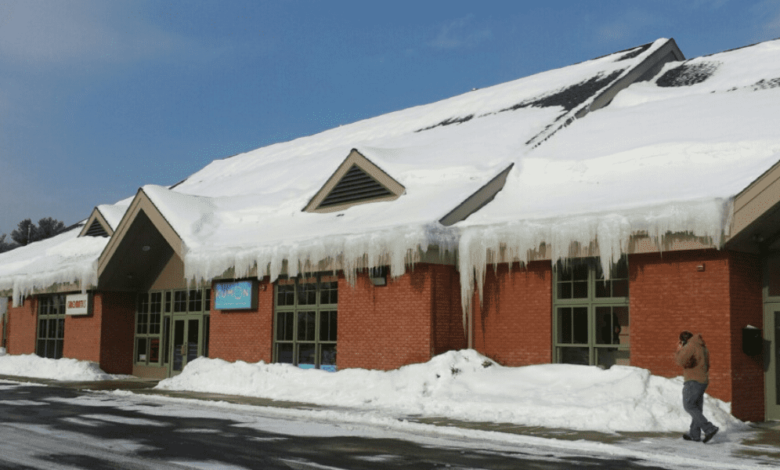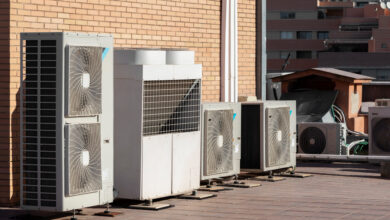Protecting Your Business From the Next Polar Vortex

In recent winters, the term “polar vortex” has become increasingly familiar, no longer confined to Canada and the Northern United States. Businesses and homeowners as far south as Texas have experienced its chilling effects!
A polar vortex is a vast expanse of low-pressure and frigid air that typically hovers over the Earth’s poles. However, since the start of the 2020s, the polar vortex has plunged to much lower latitudes than seen in recent history. This brings extremely cold temperatures and harsh winter storms that can see windchill temperatures plummeting to -50°F. Not only are these temperatures dangerous for people and pets, they pose significant challenges for property owners.
That’s because modern buildings are usually built with all of today’s modern code requirements, but many businesses don’t operate from brand-new buildings. For those of us who own a business in a dated building, this unusual weather can reveal unseen vulnerabilities under the stress of a polar vortex. To mitigate these risks, proactive preparation is essential and we recommend the following measures.

Frozen Pipes: The Hidden Hazard
Frozen pipes, a common and costly problem during a polar vortex, can occur even in interior plumbing. Here’s how to mitigate this risk:
- Avoiding Frozen Pipes: Your exterior water pipes should be properly winterized or insulated by winter, but you also need to consider the water pipes inside the business. While water pipes within interior walls benefit from being separated from the subzero temperatures, those exterior walls can get cold really quickly! Places to check for these pipes include storage rooms, basements, warehouses, loading bays, and any other space that may be more susceptible to the elements.
- Maintaining Consistent Indoor Heat: A steady temperature in your facility is important, both day and night, as it can prevent freezing. The cost of a higher heating bill pales in comparison to the potential damage of burst pipes. Even when the office is empty, don’t let the temperature drop below 60°F. On the other end of the spectrum, you don’t want to excessively heat it either, as that can burden the power grid when we all need it to be working! Limit your high to 68°F and you should be more than comfortable.
- Faucet Drip Method: A slight trickle of water through pipes, especially those on exterior walls, can prevent freezing. The constant flow of water makes freezing much harder, which relies on still or standing water. You don’t need it to be a stream of water either, but a nice consistent trickle or dripping can work. If you’re worried about a sink or fixture in particular, you can always introduce a space heater to help keep the copper piping warm. Just practice proper fire safety measures when using space heaters.
Ice Dams: Protecting Your Commercial Investment
Ice dams occur when interior heat escapes into the attic where it artificially warms the underside of the roof, above. This causes the snow on the roof to slowly melt and trickle down to the drip-edge or overhang. This is where the water becomes trapped, and unfortunately, pools atop your roof. Why? Because the edge (or overhang) of the roof has remained frozen, unlike the slope above that’s being unnaturally heated from the attic space beneath it.
Due to the location of your roof’s overhangs (i.e., without any heated living space beneath them), they’re completely exposed to the weather from the top and bottom. And if you happen to have gutters and downspouts, those will almost certainly be frozen solid, meaning all that snowmelt has nowhere to go. Once pooled behind the ice dam, it frequently leads to leaks into the dwelling, damaging walls, carpeting, insulation, electrical, and more. Not to mention mold concerns months or years later!
In addition to these hazards, ice dams can get so big and heavy that you need to call in a top-rated ice dam removal company with experience working on commercial buildings and businesses. You’ll want to ensure they use 100% steam for their removal method, as it’s the safest and most gentle option, which both your roof and your insurance provider will appreciate. To try and avoid the fiasco above, look into these prevention methods:
- Improving Attic Insulation and Ventilation: Proper insulation and ventilation in the attic can significantly reduce heat escape, thus minimizing snow melt on the roof. A home energy audit can identify and seal attic bypasses. These will commonly be recessed lighting fixtures, ceiling fans, exhaust vents, and attic doors. Anywhere that warm interior air can escape into the attic needs attention.
- Utilizing a Roof Rake: After heavy snowfall, a roof rake can safely remove snow from the roof’s edge. This tool, equipped with a heavy-duty and extendable metal rod, allows you to clear snow while standing on the ground. It’s very effective at removing large volumes of snow from those problematic edges and preventing ice dams. Just dress appropriately in a hooded jacket or with a beanie, because you’ll likely get a bit of snow on you when you’re pulling it down!
- Gutter Cleaning and Maintenance: For a variety of reasons, you should inspect and clean your property’s gutters annually. You’ll want to ensure that all plant material and debris are removed so it can’t get clogged in the downspout. Not only do clogged gutters contribute to ice dams in a big way, they also create unnecessary flooding around the foundation in rain, and can pose a fire hazard in wildfire season. It’s best to clean them in the fall after the seasons have changed and leaves have fallen.
Additional Steps to Consider
As you can see, the biggest concern when a polar vortex arrives are the subzero temperatures and how that extreme freeze impacts our lives (ie: freezing pipes, creating ice dams, etc.) There are some other steps or preparations you may want to consider:. Power outages during a polar vortex can be prolonged and severe. Essential preparation steps include:
Preparing for Power Outages:
You never know if adverse conditions will impact your tenants and employees – even during the day. In the event, they have to remain on-site for longer than normal, possibly overnight, keep a supply of non-perishable snacks and water for at least an evening per person. Also have several good flashlights and backup batteries, as sharing a single flashlight is not practical. However, you don’t need to plan for anything exceptional, but it’s nice to be able to provide some amenities and safety measures for your team if the need arises. The power goes out frequently during extreme storms and the best way to make those occurrences more comfortable and safe for your tenants or employees is to have these emergency items tucked away in storage.
Generator Maintenance:
Depending on your business needs, having a generator on-site to run a critical piece of machinery or keep your servers online may be critical. To ensure your generator is in good working condition, you need to test-run it throughout the year to make sure it’s not remaining idle for too long. Keep an adequate fuel supply nearby in an open-air environment and be mindful of best fire safety practices with its storage.
Safe Space Heater Use:
Speaking of fire safety, let’s say your power hasn’t gone out – great! You likely have many employees requesting a small space heater to stay warm during their normal duties and tasks. Try to be accommodating, but convey the importance of maintaining proper fire safety measures. If using space heaters, ensure they are placed away from flammable materials and turned off when not in use.
Preparing for a polar vortex demands a comprehensive and proactive approach. By safeguarding against frozen pipes, and ice dams, and preparing for power outages, you can significantly mitigate the risks and discomfort of this extreme weather event. Preparation is crucial; implementing these strategies ensures your property and team can remain safe and warm even during the harshest winter conditions.




